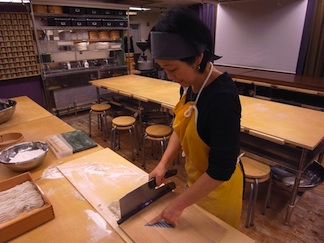
Growing up in Southern California as a person of Japanese descent, JANM has played a large role in helping me discover my cultural identity. Each exhibit that I have immersed myself in has, in one way or another, done an excellent job of captivating me while still teaching me about my Japanese American heritage. Out of all the exhibits that I have seen, the museum’s newest installment Visible & Invisible: A Hapa Japanese American History has been one of the most personally intriguing because it delves into the deep history of mixed-race and hapa individuals within the United States. Being half Japanese and half Caucasian myself, I found Visible & Invisible to be very relatable to my life.
As I walked through the exhibit, a few pieces that really piqued my interest, including an anti-Japanese campaign poster for California Senator James D. Phelan that revealed the prejudice and discrimination Japanese Americans faced more than two decades before World War II. Another intriguing part of the exhibit was an article from Ebony magazine that highlighted the troubles endured by children of American soldiers and Japanese women. Although I can’t entirely relate to those children due to the fact that being hapa hasn’t been detrimental to me at all, I realize now that life for some mixed race children, both in Japan and in the United States following World War II, was not easy.
Basketball has played a huge role in my life. Up until this past year I had been spending the majority of my weekends either at practices or games for my team, the Venice Lakers. Seeing the different Venice jerseys and pictures of multiple teams, a few of which I recognized, brought back many fond memories of my time playing Japanese American basketball. It was easily my favorite part of the exhibit. JA basketball helps expose children to not only the sport of basketball, but to different aspects of Japanese culture. If you ask a child of Japanese descent if he plays basketball, there’s a high likelihood that he or she will say yes, or will know somebody who does.
Another facet of the exhibit that interested me was Virgil Westdale, a half Japanese, half Caucasian soldier forced to switch his name from Nishimura to Westdale so he could join the armed forces. After the United States Army Air Corps found out about Westdale’s background they demoted him to private, stripped him of his pilot’s license, and sent him to Camp Shelby in Mississippi to join the 442nd Regimental Combat Team. The accompanying video helped me delve deeper into Westdale’s personal account of what life was like for him as a mixed-race member of the 442nd and as an American of Japanese heritage during World War II.
Lastly, this exhibit wouldn’t feel like a JANM exhibit without a compelling interactive component. I very much enjoyed the interactive aspects of last year’s XLAB 2012, however, the black journal experiment in Visible & Invisible has become my favorite, mainly because of the personal touch each participant can add. It’s absolutely amazing to see the artistic skills and personal messages from people as far north as Eugene, Oregon, to people who have lived in Boyle Heights since 1944.
Ultimately I would have to say that the main reason that Visible & Invisible initially appealed to me was because I am mixed-race. However, walking through the exhibit I realized that the exhibit wasn’t so much about being hapa as it was about the Japanese American experience. Visible & Invisible runs the gamut in terms of Japanese and mixed race culture within the United States by giving an informative, yet enthralling, look at nearly 300 years of history. I highly recommend coming to the JANM to check this exhibit out before it ends on August 25th.
Writer Jeremy Parks is a 17 year old high school senior who attends Campbell Hall High School in Studio City. He is an editor on his school’s newspaper. He is volunteering this summer with the museum’s Watase Media Arts Center.




 We are cutting the origami paper, ordering the bounce house, and lining up the entertainment…and you know what that means! JANM is gearing up for our annual
We are cutting the origami paper, ordering the bounce house, and lining up the entertainment…and you know what that means! JANM is gearing up for our annual 

